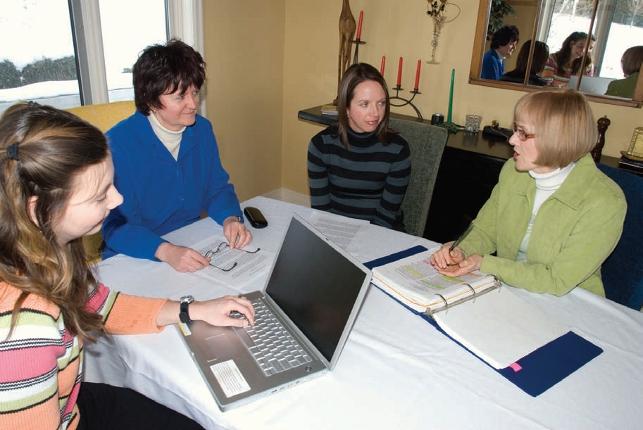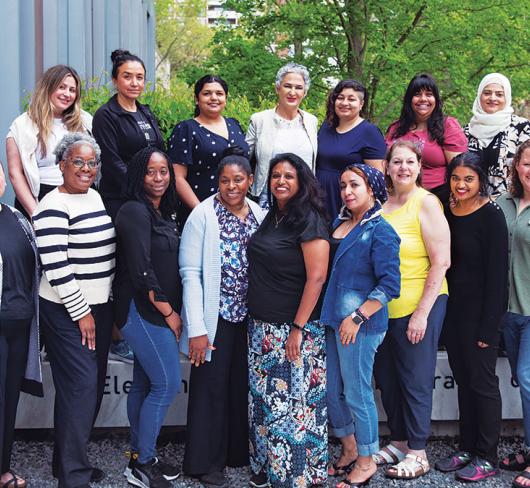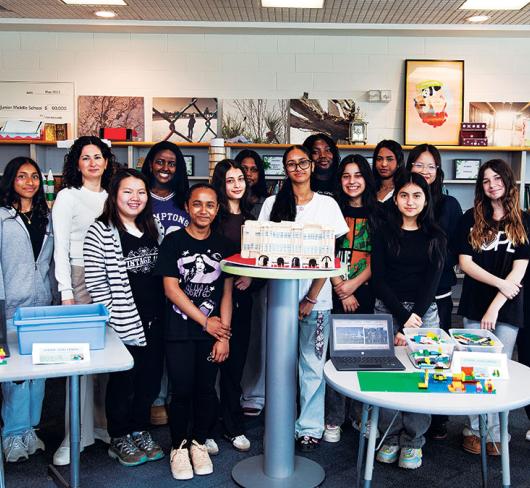
Imagining Leadership: Discovering an Identity as a Teacher-Leader
Leaders are a valuable asset to any organization. But what makes a teacher-leader and how do we recognize that person in our system? How can we encourage teachers to take on such roles? This is the story of an informal study group that found answers to some of these questions.
For over 10 months, Sonja Upton, Melissa Dixon, and Ellie Phillips, teachers with the District School Board of Niagara, gathered around my dining room table on Saturday mornings. They were in their first five years of teaching and were completing an internship for a master of education degree. We intended to create a fully integrated grade 4 curriculum and to present a paper on this experience at an academic conference. But long after the internship was completed, we were still meeting. The sessions were so rewarding and stimulating that no one wanted to give them up.
The meetings were similar to those of a study group. A key component was the double-entry journal that we decided to write after each session. On one side of the page, we wrote stories, often about classroom experiences, that were connected to the topics we explored. On the other side, we connected our stories to educational theory. We reasoned that in this way we could connect practice with theory and that the journals would provide data for our academic paper.
We read the journal entries aloud at the beginning of each session. Our reflective dialogue was triggered by the journal entries and revolved around topics of central interest to new teachers. They were curious about how to teach most effectively, how to assess, how to manage their time, and how to develop leadership skills. The weekly journals provided a focus: each individual was encouraged to try out further ideas for the next session, which resulted in our conducting a mini action research project each week.
Our discussions directly related to improving day-to-day practice. Melissa, for example, was swamped by her marking practices. Sonja was keen to “teach for understanding” and was distressed when her students wanted to be told the answers rather than solve the problem themselves. Ellie was leading a schoolwide integrated curriculum on the Olympics and was encountering obstacles.
During the course of our discussions, teacher identity emerged as a burning issue. Bright and eager, these teachers were all involved in activities outside their own classrooms, which led them to experience internal conflict. They were bringing new ideas to their schools. They questioned how far they could or should go, and how veteran teachers would respond to them. They questioned their own authority to suggest improvements in practice and to initiate innovative programs involving their colleagues. Where was their involvement in boardwide initiatives such as the Four Blocks literacy program (part of DSBN’s Windows of Opportunity) leading them? They weren’t sure that they wanted to take the administrative path, but they sensed that others held this expectation for them.
The study group process provided some answers. Sonja praised the process: “Each of us had a guiding hand and no one person led. On occasion conflict arose, but that only made our work better.” As new teachers, they found that the study group was an important forum. Ellie pointed out she “joined this group wanting to build relationships with other teachers.” She felt like the new kid on the block and particularly liked the fact that she and the others were all new teachers at the same grade level and “were will- ing to assist, mentor and learn together.” From Melissa’s perspective, “The Saturdays were a great way for us to reflect on and discuss our practice and empower each other to improve it. “
My original purpose for the group was to work out some of the kinks in developing an expectations-based integrated curriculum. I knew these students from my university classes and was impressed by the calibre of their thinking about education. The three women responded to my confidence in them. Although teacher leadership was not on the agenda, we all identified instances in which they were acting as leaders. Sonja echoed the thoughts of the others when she said, “You identified many of the things that I was already doing as leadership, such as taking part in school decisions, mentoring new teachers, and forming partnerships with our school community.“
The study group process helped these teachers recognize and acknowledge their leadership, and it changed their concept of leadership. As Ellie said, “We saw others as leaders, but did not recognize it in ourselves.” Sonja acknowledged that she had “held negative (and misguided) ideas around the concept of leadership as a stand-alone person with his or her own agenda and dictating to others rather than working as a team.”
Near the end of the 10 months, an event occurred that dramatically shifted the teachers’ self-concepts. Recommended by her principal, Melissa attended Leadership from the Roots Up, a provincial conference for budding leaders in their first five years of teaching. It was here that she heard the term “teacher-leader.” She returned, excited by this concept and by an emerging definition of it that had been shaped, in part, by educational consultant Jean Hewitt, one of the keynote speakers. Melissa wrote:
To be a leader is independent of having a position in a large organization. In many cases it will bemore difficult to be an effective leader if you hold a position in a highly structured organization . . .where the culture of control remains. Real leadership is reshaping the world around us by movingbeyond a management orientation. True leadership involves new ways of thinking about innovation inall areas of the school system. A true leader has authority in intent, knowledge, and character.Choosing to be a leader is a lifelong commitment. Leadership is about making a difference, standing up for what is right and facing obstacles.
The concept of teacher leadership resonated for all of us, yet accepting the mantle of teacher leader was not easy for any of the teachers. We spent a long time discussing how it connected to them.
For Melissa: “We can be leaders regardless of position … it’s not the title.”
For Ellie: “My eyes are opened now and I see I might be a leader.”
For Sonja: “I don’t see myself as a leader but as a partner. I encouraged my teaching partners to participate in an environmental project and became involved in leading the school’s Green Team.”
Our collaborative study group is over, but the professional development that occurred is deeply rooted. These teachers are true leaders who continually strive toward making education better for all students.

